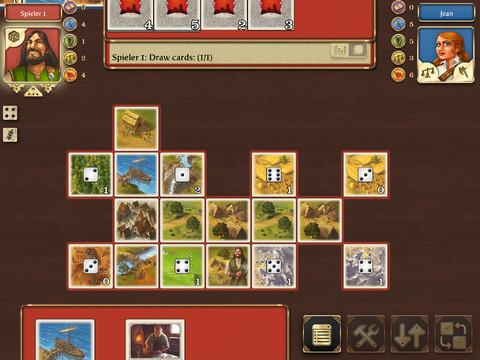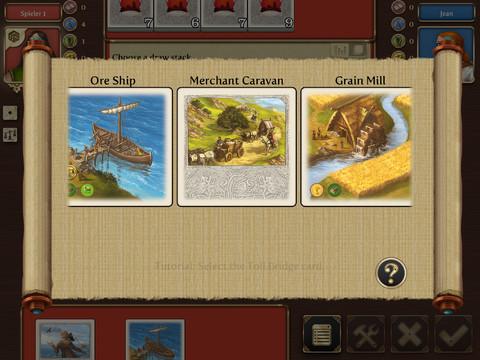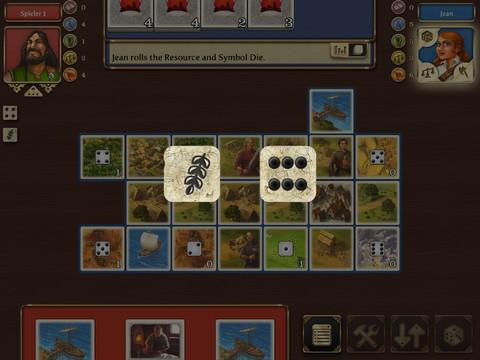- Wondering how to get Monopoly GO! free rolls? Well, you’ve come to the right place. In this guide, we provide you with a bunch of tips and tricks to get some free rolls for the hit new mobile game. We’ll …
Best Roblox Horror Games to Play Right Now – Updated Weekly
By Adele Wilson
Our Best Roblox Horror Games guide features the scariest and most creative experiences to play right now on the platform!The BEST Roblox Games of The Week – Games You Need To Play!
By Sho Roberts
Our feature shares our pick for the Best Roblox Games of the week! With our feature, we guarantee you'll find something new to play!All Grades in Type Soul – Each Race Explained
By Adele Wilson
Our All Grades in Type Soul guide lists every grade in the game for all races, including how to increase your grade quickly!
Rivals for Catan Review
The Settlers of Catan revolutionised board gaming when the world discovered what was originally a German family game in the mid- to late- nineties. But its model of shrewd trading and racing to grow in a limited space didn’t work with two players. So a card version was released to fill that gap, recently re-released as Rivals for Catan and now released again for iOS.

Rivals for Catan can’t rival its real life rivals.
The Settlers of Catan revolutionised board gaming when the world discovered what was originally a German family game in the mid- to late- nineties. But its model of shrewd trading and racing to grow in a limited space didn’t work with two players. So a card version was released to fill that gap, recently re-released as Rivals for Catan and now released again for iOS.
Like its big brother, in Rivals for Catan each player builds a little empire of villages, roads, and cities from resources gathered by the rolling of dice. But quite unlike basic Settlers, you can build a whole lot more stuff from your hand of cards. There are heroes, ships (which reproduce the effect of harbours from the original), new buildings like the Abbey or the Market, and flavourful actions and events (a caravan might visit the area, or a wise woman might predict the coming seasons).
Player interaction was a big part of the appeal of the board game, and it’s still here albeit in reduced and modified form. You can’t trade any more, and the empires are distinct and not so much competing for space, but instead there’s some nasty “take that” style cards in the deck. The effect is amplified if you pick one of the three “theme” decks which emphasise a particular aspect of play: if you like interaction, for instance, try the Turmoil deck. All of the deck variants have a distinct flavour, adding to replay value.
I love the original game, and still find it very worthwhile now, even though it’s looking comparatively ancient next to more modern games. But although I miss the multiplayer shenanigans, this is an excellent 2-player version that not only captures the essence of the original, but ladles on delicious extra layers of theme and strategy. It gives a lovely sense of slow growth from humble beginnings, and makes excellent fuel for your budding megalomania.
So it’s a bit of a shame that developer USM have made something of a mess of this app version. There are problems even at the most fundamental levels. It appears as though you can start a game and go back to it later, but attempting to do so frequently causes the app to crash. It takes about 30 minutes to play, so you can complete it in one sitting, but it’s frankly astonishing that such a severe bug made it through the QA process. It’s not the only one either: a cursory search reveals many other reports of crashes and freezes.
This pattern, of things looking fine on the surface but then revealing shoddy workmanship as you probe deeper, is repeated in other areas. At first glance, the interface looks bright and attractive, but the usability isn’t great, and comes riddled with small yet irritatingly obvious oversights like not showing the resource costs of your cards unless you zoom in on them. And most of the custom art has been recycled from the developer’s app version of the board game.
The tutorial, again, looks fine at first, but by the time you get to the end of it you’re unlikely to have a clear idea of how the game works unless you’re familiar with its bigger board game sibling. And since there’s no text version of the rules inside the app itself, that’s potentially a lot of gamers left frustrated and annoyed. Options are limited too. It would have been handy, for instance, to have one option that let you speed up animations, but it’s simply not there.
In terms of the multiplayer option, the menu gives the illusion of having solid multiplayer support with options for hotseat and GameCenter play. But the latter is real-time only: there’s no ability to play your friends on a turn by turn basis which is a pretty basic and essential option in a modern board game app. Fortunately, it does at least offer a variety of AI opponents, some of which seem fairly competent and will offer solo players plenty of challenge in the future. But without asynchronous play, the shelf-life is likely to be limited.
I’d like to say that some solid patching is likely to set everything right, but unfortunately this developer has a poor record of supporting its apps post release. I’m sure the most serious issues will get squashed in good time, but there’s little hope of improvements to the interface or the addition of asynchronous play. At the moment, it barely scrapes into playable territory and can’t be recommended. After playing this new mobile version of Rivals for Catan, I’m sorely tempted to grab a copy of the physical game to add to my collection.

The good

The bad
More articles...
Monopoly GO! Free Rolls – Links For Free Dice
By Glen Fox
Wondering how to get Monopoly GO! free rolls? Well, you’ve come to the right place. In this guide, we provide you with a bunch of tips and tricks to get some free rolls for the hit new mobile game. We’ll …Best Roblox Horror Games to Play Right Now – Updated Weekly
By Adele Wilson
Our Best Roblox Horror Games guide features the scariest and most creative experiences to play right now on the platform!The BEST Roblox Games of The Week – Games You Need To Play!
By Sho Roberts
Our feature shares our pick for the Best Roblox Games of the week! With our feature, we guarantee you'll find something new to play!All Grades in Type Soul – Each Race Explained
By Adele Wilson
Our All Grades in Type Soul guide lists every grade in the game for all races, including how to increase your grade quickly!








 “
“ “
“